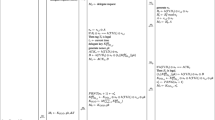Abstract
RFID systems have been widely adopted in various industrial as well as personal applications. However, traditional RFID systems are limited to address only one tag for each application object. This limitation hinders the usability of RFID applications because it is difficult, if not impossible, to distinguish many tags simultaneously with existing RFID systems. In this paper, we propose a new RFID tag structure to support multiple-objects that can be easily shared by many different RFID applications. That is, the proposed RFID tag structure supports that a tag maintains several different objects and allows those applications to access them simultaneously. We also propose an authentication protocol to support multiple-object RFID applications. Especially, we focus on the efficiency of the authentication protocol by considering different security levels in RFID applications. The proposed protocol includes two types of authentication procedures. In the proposed protocol, an object has its security level and goes through one of different authentication procedures suitable for its security level. We report the results of a simulation to test the performance of the proposed scheme. In our simulation, we considered the safety of our scheme against potential attacks and evaluated the efficiency of the proposed protocol.






Similar content being viewed by others
References
Garfinkel, S. and Rosenberg, B, “RFID: Applications, Security and Privacy”, Addison Wesley, ISBN 0-321-29096-8, 2005.
IETF RFC 4269, “The SEED encryption algorithm”, IETF(The Internet Engineering Task Force), 2005.
Juels, A.; Rivest, R. L. & Szydlo, M., “The blocker tag: selective blocking of RFID tags for consumer privacy”, Proceedings of 10th ACM Conference on Computer and Communications Security(CCS 2003), pp. 103–111, Washington DC., USA, October, 2003.
Jung YG, Han MS, Chung KY, Lee SJ (2011) A Study of a Valid Frequency Range using Correlation Analysis of Throat Signal. Information-An International Interdisciplinary Journal 14(11):3791–3799
Ko H, Kim J, Jung J, Joe S, Lee Y, Chang Y, Lee K (2007) A Study on the RFID Tag Encryption using Fast SEED, ICCMSE2007 Corfu, Greece, 571–574
mCloak, http://www.mobilecloak.com, 2003.
Ohkubo M, Suzuki K, Kinoshita S (2003) Cryptographic approach to “Privacy-friendly” tags, RFID Privacy Workshop @MIT.
Saito J, Sakurai K (2004) Variable ID scheme of anonymity in RFID tags, Proceedings of the 2004 Symposium on Cryptography and Information Security, Vol. 1, pp. 713–718, Sendai, Japan
Song CW, Chung KY, Jung JJ, Rim KW, Lee JH (2011) Localized Approximation Method Using Inertial Compensation in WSNs. Information - An International Interdisciplinary Journal 14(11):3591–3600
TTAR-06.0013, “Technical report on numbering an RFID tag, TTA Technical Report”, TTA(Telecommunication Technology Association), 2006.
Weis SA, Sarma SE, Rivest RL, Engels DW (2003) Security and privacy aspects of low-cost radio frequency identification systems, First International Conference on Security in Pervasive Computing, pp.201–202, Lecture Notes in Computer Science 2802, Springer-Verlag
Acknowledgments
This work was supported by the Daejin University Research Grants in 2013.
Author information
Authors and Affiliations
Corresponding author
Rights and permissions
About this article
Cite this article
Kim, JY., Chung, KY. & Jung, JJ. Single tag sharing scheme for multiple-object RFID applications. Multimed Tools Appl 68, 465–477 (2014). https://doi.org/10.1007/s11042-013-1357-4
Published:
Issue Date:
DOI: https://doi.org/10.1007/s11042-013-1357-4




